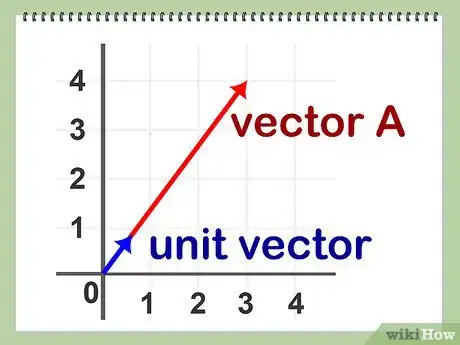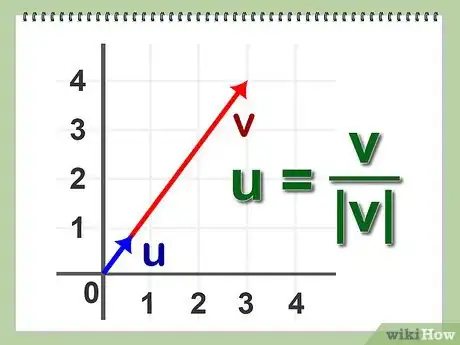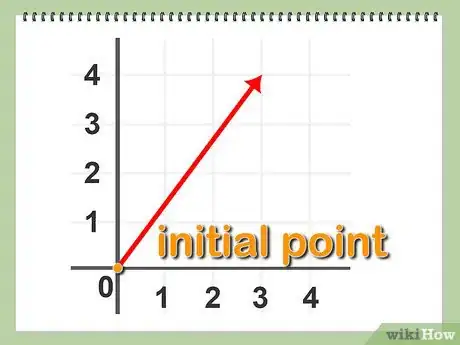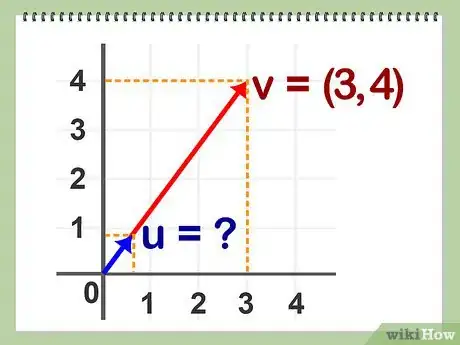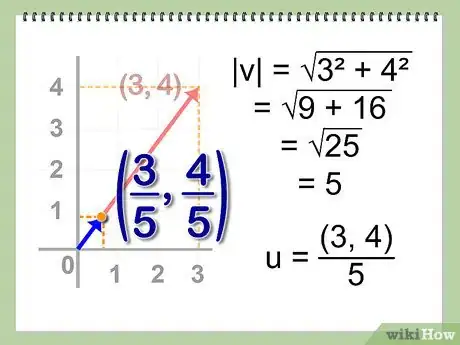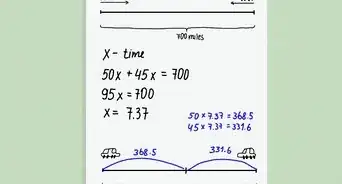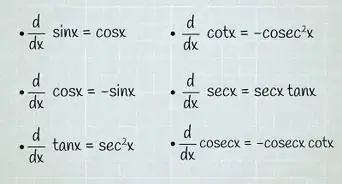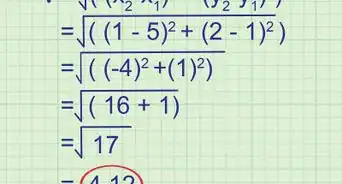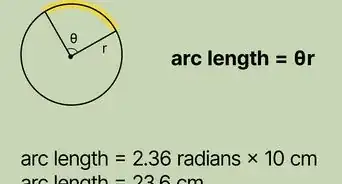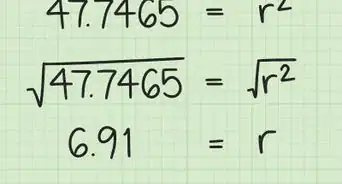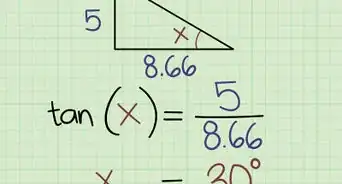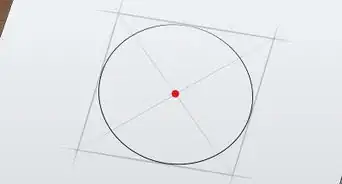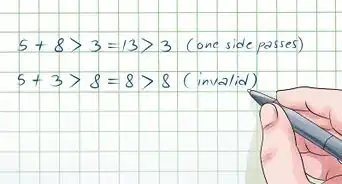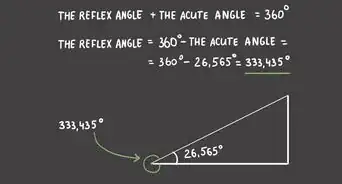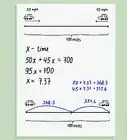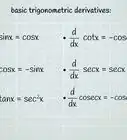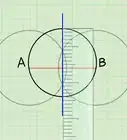wikiHow is a “wiki,” similar to Wikipedia, which means that many of our articles are co-written by multiple authors. To create this article, 11 people, some anonymous, worked to edit and improve it over time.
There are 7 references cited in this article, which can be found at the bottom of the page.
This article has been viewed 200,982 times.
Learn more...
A vector is a geometric object that has direction and magnitude. It may be represented as a line segment with an initial point (starting point) on one end and an arrow on the other end, such that the length of the line segment is the magnitude of the vector and the arrow indicates the direction of the vector. Vector normalization is a common exercise in mathematics and it also has practical applications in computer graphics.
Steps
Define Terms
-
1Define a unit vector. The unit vector of a vector A is the vector with the same initial point and direction as A, but with a length of 1 unit.[1] It can be mathematically proven that there is one and only one unit vector for each given vector A.
-
2Define the Normalization of a vector. This is the process of identifying the unit vector for a given vector A.[2]Advertisement
-
3Define a bound vector. A bound vector in Cartesian space has its initial point at the origin of the coordinate system, expressed as (0,0) in two dimensions. This allows you to identify a vector solely in terms of its terminal point.[3]
-
4Describe vector notation. By restricting ourselves to bound vectors, A = (x, y) where the coordinate pair (x,y) indicates the location of the terminal point for vector A.[4]
Analyze the Objective
-
1Establish the known values. From the definition of the unit vector, we know that the initial point and direction of the unit vector is the same as the given vector A. Furthermore, we know the length of the unit vector is 1.[5]
-
2Determine the unknown value. The only variable we need to calculate is the terminal point of the unit vector.
Community Q&A
-
QuestionWhat is the direction of cosine?
 DonaganTop AnswererA cosine does not have direction. It is a ratio of one length to another.
DonaganTop AnswererA cosine does not have direction. It is a ratio of one length to another.
References
- ↑ http://mathworld.wolfram.com/UnitVector.html
- ↑ https://www.youtube.com/watch?v=7fn03DIW3Ak
- ↑ https://webspace.maths.qmul.ac.uk/j.n.bray/MTH4103/GeomINotes01.pdf
- ↑ https://www.khanacademy.org/math/multivariable-calculus/thinking-about-multivariable-function/x786f2022:vectors-and-matrices/a/vectors-and-notation-mvc
- ↑ http://mathworld.wolfram.com/NormalizedVector.html
- ↑ https://www.khanacademy.org/computing/computer-programming/programming-natural-simulations/programming-vectors/a/vector-magnitude-normalization
- ↑ http://www.fundza.com/vectors/normalize/
About This Article
A vector is an object that has both magnitude (sometimes called size or length) and direction. Vectors are usually represented by drawing an arrow, where the direction of the arrow represents the direction of the vector, and the length of the arrow represents its magnitude. Normalizing a vector involves converting it to a “unit vector” with a standard magnitude, usually 1, while preserving the vector’s original direction. To do this, start by determining the start and end points of your vector. For instance, the vector may start at (0,0) on the x-y axis, and end at (3,4). This vector moves up from left to right. From there, you can determine that your unit vector will have the same starting point and direction as the original vector. You also know that the length of your unit vector is 1. Now you’ll need to calculate the end point, or terminal point, of your unit vector. First, calculate the length of the original vector using the Pythagorean theorem, a^2 + b^2 = c^2. Think of the vector as a right triangle, where sides A and B equal the values of the end coordinates in the x and y axes, and the hypotenuse is the length of the vector. In this case, we know that 32 + 42 = 25. Take the square root of 25 to get 5, the length of the vector. Finally, divide the x and y coordinates by the length of the vector to get the endpoint coordinates of your normalized vector. Now you know that the start point of your unit vector is (0,0), its end point is (3/5, 4/5), its magnitude is 1, and it moves up as you go from left to right along the x axis. To learn how to normalize a vector in 2-dimensional or n-dimensional space, keep reading!
